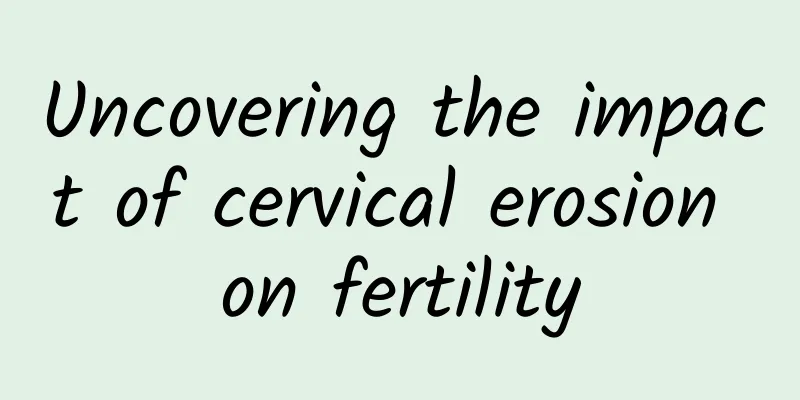Will dysmenorrhea affect pregnancy?

|
According to a survey of women of childbearing age, nearly 90% of women aged 14-25 suffer from menstrual disorders such as dysmenorrhea, early or delayed menstruation, and dysmenorrhea is the most common problem. What is most surprising is that dysmenorrhea can even cause infertility. Many people have only a vague understanding of dysmenorrhea, so let's first learn about dysmenorrhea. There are two types of dysmenorrhea, primary dysmenorrhea and secondary dysmenorrhea. Dysmenorrhea without organic lesions in the reproductive organs is called "primary dysmenorrhea". Primary dysmenorrhea usually occurs in unmarried, non-pregnant women and generally has no effect on fertility. Dysmenorrhea caused by genital organ diseases is called "secondary dysmenorrhea", that is, pathological dysmenorrhea. Its causes are relatively complex. Endometriosis, adenomyosis, uterine fibroids, endometrial polyps, uterine cavity adhesions, residual uterine horn, pelvic inflammation (acute and chronic), cervical stenosis, imperforate hymen, vaginal septum, etc. may all cause dysmenorrhea, and a series of examinations are needed to determine the cause. Shock! Ignoring pathological dysmenorrhea can lead to infertility. There must be many people who regard those days of each month as the "end of the world", but how many people have thought of seeing a doctor for this? Some expectant mothers hope to "just have a baby", but in the end they find that they can't have a baby at all. Experts point out that in fact, many people's menstrual pain is pathological dysmenorrhea, which will not be relieved after marriage, but will continue to worsen. In the end, in addition to being affected by the pain in normal life, it is more likely to invade other organs and cause infertility. Some women who have had dysmenorrhea since their teenage years often take medicine to deal with it themselves, but they don't know that with the increase of age, her dysmenorrhea may have changed in nature, from a general physiological cause to a disease. They delay seeing a doctor and treatment without realizing it, and only discover it when they are treated for infertility. As a result, the pain increases and the difficulty of treatment increases. Now that we have some understanding of dysmenorrhea and its dangers, we should pay special attention to it in our future lives. We should not take dysmenorrhea lightly, but seek treatment as early as possible to relieve the pain of dysmenorrhea as soon as possible. |
<<: What painkillers are good for dysmenorrhea?
>>: How much does Chinese medicine for dysmenorrhea cost?
Recommend
Vulvar itching medication is not simple
According to a survey by a US healthcare product ...
10 tips! Summer easy slim belly
As summer approaches, many people start wearing c...
The main causes of hydatidiform mole
The main causes of hydatidiform mole include gene...
What are the causes of ovarian cysts? Can you briefly introduce them?
What are the common causes of ovarian cysts? Many...
Did you know that uterine bleeding is a symptom of uterine fibroids?
Whether uterine fibroids have symptoms and their ...
What can be seen from abnormal vaginal discharge testing?
Detecting abnormal vaginal discharge can be used ...
Can cervical warts be cured?
Cervical warts are not an incurable disease as so...
What should I do if my period is delayed for 7 days?
What should I do if my period is delayed for 7 da...
Will I get cancer after having an abortion for a hydatidiform mole?
Abortion of hydatidiform mole does not necessaril...
Female patients should always pay attention to the symptoms of ectopic pregnancy
Ectopic pregnancy is a very common gynecological ...
Analysis of why unmarried women suffer from adnexitis
Generally speaking, unmarried women are not prone...
Can abortion be performed with medical treatment after incisional pregnancy? Let’s take a look
Incisional pregnancy, also known as cesarean scar...
Correct understanding of cervical erosion
Among women with active sex lives, the incidence ...
How to regulate the pelvic fluid to drain out
Most pelvic effusions can only be eliminated by f...
What are the dietary care methods for uterine effusion?
Women with gynecological inflammation such as ute...









